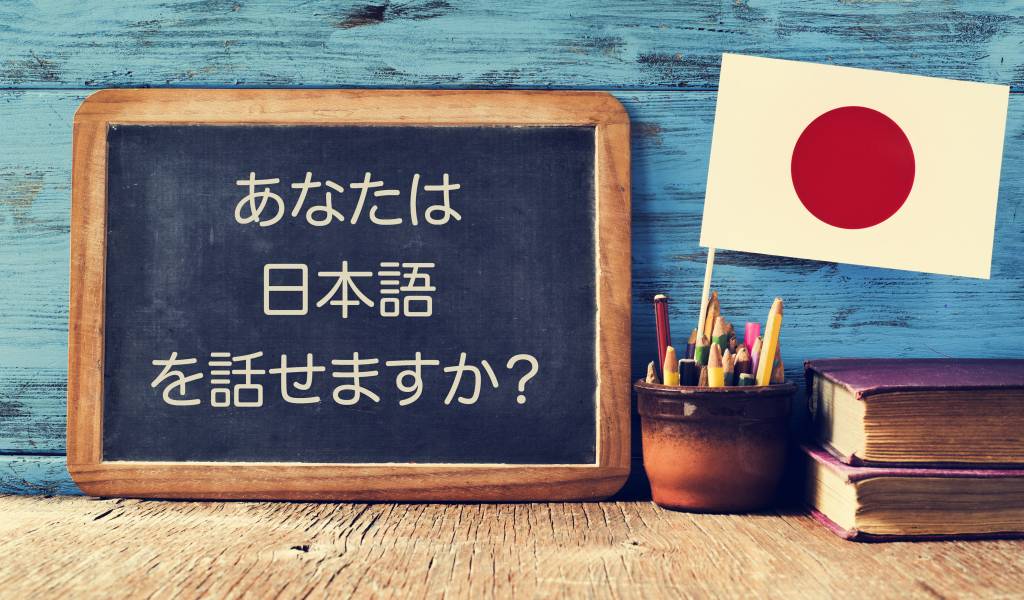It is impossible to remain indifferent to Japanese culture. It is a different civilization where all you have learned must be forgotten
Culture is a tradition that consists of the beliefs, morals, and practices held and observed by specific human groups in society that have been passed down from their ancestors through their grandparents, parents, siblings, and the society around them. Japanese culture is incredibly a unique culture the world witnesses based on their unique values, and traditions influenced by their religion and lifestyle. Japanese culture is a fairly staid culture, a traditional one, and, for the most part, static.
It is said that the Japanese come from a subgroup of Mongoloid peoples who inhabited most of Asia and the New World . Geographically Japan is situated in the northeastern Asian islands. The four major islands are Honshu, Hokkaido, Kyushu, and Shikoku, along with many smaller ones .People in Japan speak Japanese. Throughout the early history known of the Japanese there is an abundance of civil wars with rival groups.However when the Edo period came into existence , there was a long period of peace for over two hundred and fifty years. This period witnessed a lot of affluence and advancements ,development in the arts, and literature.
THE ART OF JAPAN
Delicate and exquisite form, together with adorable simplicity, characterizes the artistic taste of Japanese people. The Japanese tends to view the traditional Chinese arts generally as being too grandiose or showy.
Traditional forms
The highly refined and rich traditional arts of Japan includes tea ceremony, calligraphy, and ikebana (flower arranging) and gardening, also unique architecture, painting, and sculpture.Also Japan has got their best performing arts are distinguished by their blending of music, dance, and drama, rooted in different eras of the past. The major traditional theatrical forms of their art (roughly in chronological order of their appearance) are bugaku (court dance and music), Noh (Nō; the classic form of dance-drama), kyogen (a type of comic opera), Bunraku (the puppet theatre), and Kabuki (drama with singing and dancing).Ikebana, the tea ceremony, and calligraphy are popular pursuits here which are accomplishments for women. But we can notice that traditional Japanese painting, dance, and music have lost much of their earlier popularity. Although the poetic forms of haiku and waka have continued to flourish till date. Various styles of pottery, lacquerwork, cloisonné, and bamboo ware, as well as papermaking, silk weaving, and cloth dyeing contribution to the finest art here. Traditional handicrafts constitute examples of Japanese visual arts. Is is being noticed that with the advancement of modernization, many folk traditions and forms of folklore are disappearing day by day. The widespread use of standard Japanese has accelerated this trend, since local cultures are directly related to dialects.Folk songs are no longer a tradition now, except in some remote areas in northern and southwestern Japan.Some forms still enjoy a great popularity, which has been increased through the mass media. On informal social occasions, even in the large cities, folk and popular songs are often sung to give aesthetic, traditional touch to the occasion.
Western forms
Orchestras, and Western-style painting, sculpture, and architecture are widely practiced in major cities in Japan. Number of venueshave been constructed for Western classical music throughout the country since the 1980.Taking a Western form and putting it through a Japanese aesthetic filter to produce a distinctive style, here the cinema has been truly successful.Internationally acclaimed Japanese film directors include Kurosawa Akira, Ozu Yasujirō, Mizoguchi Kenji, and Itami Jūzō.Competition from television, videotapes (and later DVDs), and video games, but innovations such as multiplex theatres (venues with multiple auditoriums) have increased attendance resulting in drop in the number from its high point of moviegoers in the mid 20th century.
Daily life and social customs
Majority of Japan society is Urban but urban culture is transmitted throughout the country by a mass media largely concentrated in Tokyo. Generations of Japanese who were born after World War II enjoy the Jazz, blues and rock music form. Japan invented Karaoke(in Japanese, literally “empty orchestra”)in the early 1970s, is a popular form of nightlife entertainment.Here family life of people revolves around their workplace and school. Role specialization between men and women, once widespread, gradually has been changing with coming years. Women are mostly home makers, look after their children, care of the extended family; an increasing number of women, the majority of them married, work outside the home, although often in part-time jobs and Men are traditionally bread winners working outside.
SPORTS
Japanese people have immense love for sports.Baseball was introduced toJapan in the 1870s era and soon it became the country’s favourite team sport.Two professional leagues were in operation—the Central League and the Pacific League were played in 1950s and many baseball stars, notably slugger Oh Sadaharu, have ranked among the country’s best-known national celebrities in the world. During Meiji times many other sports too were introduced, as contact with the West increased such as basketball, volleyball, and football (soccer) and more individual activities such as golf, tennis, and badminton.Football also gained popularity.
A professional football league, established in 1993, has grown to include more than two dozen teams, and there are numerous youth leagues. Japan’s national football team has made strong remarks and showings in international competition, including the 2002 World Cup finals, which Japan cohosted with South Korea. Kendo, judo, and karate are widely practiced in Japan. Noncompetitive sports like martial arts, such as jujitsu and aikido, also have large numbers of practitioners in Japan and also throughout the world.Sumo wrestling is the great traditional sport of Japan from 8 th century. The six major professional tournaments held annually are avidly followed throughout the country, and the best wrestlers—notably the grand champions (yokozuna)—often become enormously popular.In Olympic Games Japan started participating from 1912.They hosted the Olympics three times: the Summer Games in 1964 at Tokyo (the first time the Olympic Games had been held in Asia) and the winter games in 1972 and 1998, at Sapporo and Nagano, respectively. Japanese athletes are extremely strong in gymnastics and judo.
CUISINE
They serve the light cooked food and mostly raw.The best-known Japanese dish famous and enjoyed worldwide is sushi— cooked, vinegared rice served with a variety of vegetable, sashimi (raw seafood), and egg garnishes and formed into various shapes; in addition, sashimi is commonly served on its own. Tempura is also special dish made with seafood and vegetables dipped in a rice-flour batter, deep-fried, and served over steamed rice. Tofu is commonly eaten and served here. Their cuisines are incomplete without noodles.Noodle preparations, including soba (made from buckwheat and often served cold) and udon (made from wheat and usually served after quick-frying on a hot grill or in hot broth) are dishes widely eaten and enjoyed. Sake, a brewed alcoholic beverage made from fermented rice is from Japan,it is served heated in small porcelain cups.Beer production of Japan is profoundly known by everyone in the world. Also many distilled beverages are produce here. Whiskey is also part of the production.
SOCIAL CUSTOMS
The wedding ceremony in Japan often consists of a blend of East and West culture: a traditional Shintō ceremony takes place in which the bride and groom wear elaborate kimonos, typically is followed by a Christian-style observance, with the participants in formal Western attire. New year is celebrated with great enthusiasm here and is regarded as most important holiday. Millions of people engage in a kind of pilgrimage to shrines and temples starting at midnight of December 31 for celebrating new year. Thereafter three days their friends and family visit their house. Japan has 15 national holidays. The occurrence of multiple holidays in late April–early May (popularly called Golden Week) is one of the most popular vacation times for the Japanese, as is the week of the Bon festival in mid-July or mid-August, when the spirits of deceased ancestors are honoured by them .Many temples and shrines celebrate their own specific festivals, attracting large numbers of people from the country.City, town, and village authorities, as well as local communal bodies, often organize local festivals in their respective localities. Seasonal blossom and leaf viewing are things Japanese are extremely fond of. Cherry Blossom of the spring are most famous. Each year the entire country is captivated by the northward progress of the trees’ blossoming—the so-called “cherry blossom front.”
TECHNOLOGY
Japan is known for the most technologically advanced country in the world. Breathtaking and innovative inventions and scientific research are part of their technology. They proved possible growth in the innovation and technology with uniqueness .After the four major stages of human development: hunter-gatherer, agrarian, industrial and information, Japanese people are moving towards “Society 5.0” rapidly. They have designed everything in such an innovative way that In this new ultra-smart society, all things will be connected through IoT technology and all technologies will be integrated, dramatically improving the quality of life.Data exchanges using satellites are growing here. They have efficiently developed cloud based system to connect ground station antennas scattered around the world. This will truly help to enrich the life of human race.
Advancement of vehicle technology, consumer electronics, robotics, medical devices, space exploration, and the film industry has been noticed after world War ||.Japan has exemplary educational system as well its higher education institutions which accelerates the growth and development in technology. Technological innovation and aid engineering talent development has reached noticeable progress. Advances in automotive engines, television display technology, videogames, optical clocks, and many other fields is also seen due to high level of support for research and development in the country. They are honoured as the global leader in the robotics, natural sciences, aerospace exploration and biomedical research areas.In 2021, Japan was ranked 13th in the Global Innovation Index by the World Intellectual Property Organization, rising from 16th in 2020.
Japan has huge international corporate mixtures such as Fuji (which developed the nation’s first electronic computer, FUJIC1999, in 1956) and Sony. Sony, Panasonic, Canon, Fujitsu, Hitachi, Sharp, NEC, Nintendo, Epson and Toshiba are among the best-known electronics companies in the world they are from Japan.Toyota, Honda, Nissan, Mazda, Mitsubishi, Suzuki, and Subaru are also very well known automobile companies in the world for their efficiency and best innovations.
It is estimated that 16% of the world’s gold and 22% of silver is contained in electronic technology is in Japan compared to the amount of known reserves still in the ground.
Robotics is very well known here. Robots are used in restaurant, hospitals, homes to reduce work load and replace man efforts. Japanese research companies are researching on advanced AI robots that can mimic the work of humans for development in the field of robotics.
They even lead in the biomedical areas. Japan is the global leader in biomedical research field along with the United States and elsewhere.Yhe Japan Agency for Medical Research and Development was established to help implement biomedical research and development projects and improve the support infrastructure for clinical research.various national university and private university research hospitals in Japan carries out research . These research hospitals include University of Tokyo Hospital, Tohoku University Hospital, and Keio University Hospital among others.
Sakichi Toyoda, Kokichi Mikimoto, Kotaro Honda, Tokushichi Mishima, Hidetsugi Yagi, Umetaro Suzuki,Jokichi Takamine,Kikunae Ikeda, Kyota Sugimoto and Kyota Sugimotore are the ten great inventors of Japan. On the centennial anniversary of the creation of the industrial rights system in 1985, the Japan Patent Office selected these ten Japanese inventors whose inventions helped contribute to Japan’s rapid industrial development and scientific research.
Since 1973, Japan has been looking to become more independent on imported fuel and start to depend on nuclear energy. Japan became the third largest nuclear power user in the world with 55 nuclear reactors which provide 34.5% of Japan’s electricity efficiently.
With the invention of The canned coffee, instant noodles, karaoke, blue-light-emitting diodes and the Walkman life of Japanese people because better.Japan was a pioneer of MP3 technology.
DRESSING
Kimono which means thing to wear is the fashion of Japanese people. It is the main form of fashion. It is the national dress of Japan.It has multi-layers that fold across the front of the body like robes. It is typically floor- or ankle-length dress and has wide sleeves. Different styles vary in layers, materials, accessories, and more features. With its elegance and versatility, it’s no wonder the kimono has survived so long. They symbolize social class, heritage and history. Yukata is considered casual attire in Japan,which is very much formal. Its like a skirt worn both by male and female.
Japanese street style is known for its very bold and cutting edge. While there’s no single definition that can describe Japanese street style, there are some defining trends. Loose, overfitted clothing in muted colors is fairly typical here.
Generally, it’s all about silhouettes and mixing things up—layers, vintage, designer, and more that adds To fashion here.Some common accessories include stylish sneakers and belt bags (similar to fanny packs in function, but not in appearance).
RELIGION
Shintoism and buddhism contribute to the religion of Japan. Unlike in West, religion here is hardly preached.Its about moral code, way of living, principles almost indistinguishable from Japanese social and cultural values. Also religion is private and familiar affair . Religion is no way discussed in every day life and the majority of Japanese do not worship regularly or claim to be religious in their life. Most practice religious rituals in birth, marriage and death and take part in spiritual matsuri (or festivals) throughout the year.
Nara, in the Kansai region situated near Osaka, is thought to be the original home of Buddhism in Japan and features beautiful museum of Buddhist art and artifacts, as well as the huge statue of Buddha that is Nara’s central visitor attraction for visitors.
Kyoto – the place is full of beautiful shrines and temples and can provide a unique look back through history to a time when religious belief, rituals was a more significant part of everyday life, as well as being simply stunning to behold. In fact, everywhere you go in Japan, you will notice the face of the country’s religious heritage.
The culture of Japan has drastically changed greatly over the millennia, from the country’s prehistoric Jōmon period, to its contemporary modern culture, which absorbs influences from Asia and other regions of the world and makes the culture rich.



